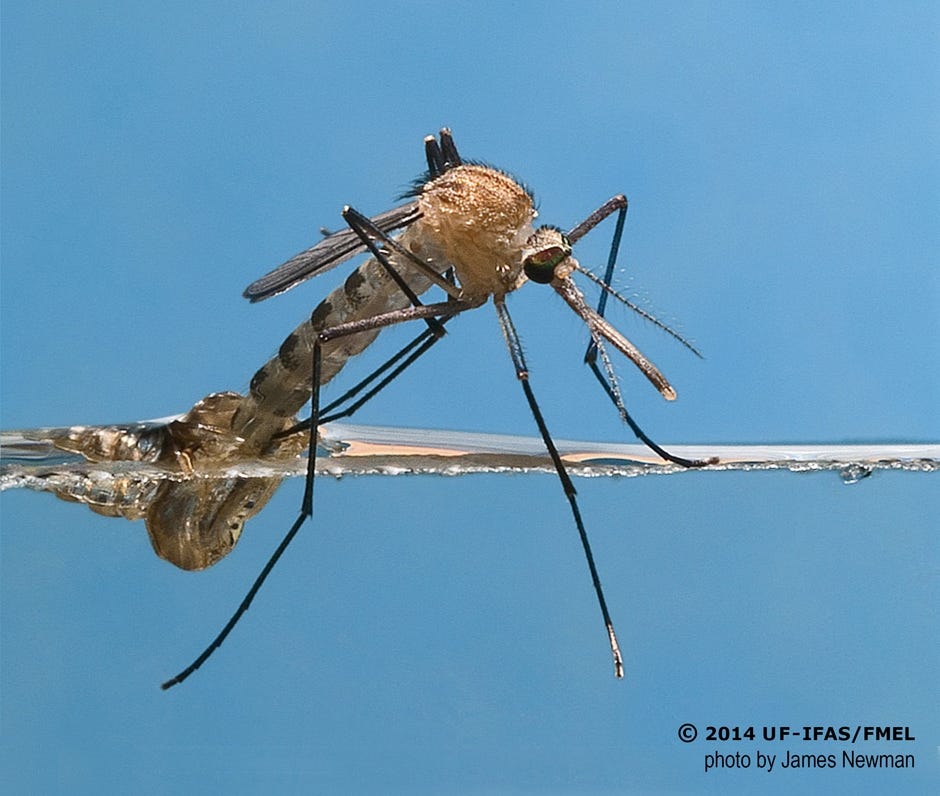![A Southern house mosquito, or Culex quinquefasciatus, emerges from the pupal exuviae, or cast skin, onto water. [CONTRIBUTED PHOTO]](http://127.0.0.1/wordpress/wp-content/uploads/2022/01/ghows-DA-8baedd48-4174-656c-e053-0100007f7c43-b1c759be.jpeg)
I love summer; going to the beach, snorkeling, kayaking and grilling in the backyard. But summer comes with its own share of challenges. One of my least favorite summer guests are bugs. The list of bugs I dislike is long, but here are a few that like to torment us all.
Mosquitos are one of summer’s bad actors. They lay their eggs and their larvae mature in both manmade and natural water holding containers such as bird baths, plants, buckets, used tire and holes in trees.
Some mosquitos just bite while others carry disease. The easiest way to get rid of mosquitos is to get rid of any water-holding containers in the area.
Ants, in particular fire ants, are another unwelcome summer arrival. This invasive species is aggressive, and their painful stings can injure both humans and animals.
Fire ant nests look like large mounds of dirt and typically have multiple openings. You must kill the queen to completely eliminate a colony. Even if the queen is killed, surviving ants may inhabit the mound or make a new mound until they die off. Some treatments that may work to get rid of these pests include baits, pesticides and boiling water.
Many biting flies — yellow flies are my least favorite — persistently attack man and animals to obtain a blood meal. Like mosquitoes, the female fly is responsible for inflicting a bite.
Biting flies like shady areas under bushes and trees and wait for their victim to pass by. They typically attack during daylight hours, a few hours after sunrise and two hours before sunset.
Currently there are no adequate means for managing populations. Traps are sometimes effective in small areas such as yards, camping sites, and swimming pools.
In the water, jellyfish are the most common summer pest. Their reputation for stinging people puts them in a similar category with the above-mentioned pests.
Sea lice, the larval form of the thimble jellyfish, is a common near-shore pest, while Portuguese Man-O-War and the box jellyfish can give a very painful sting. Another type, comb jellies, are not true jellyfish and do not sting.
If you get stung, rinse the sting site with large amounts of household vinegar, or jelly-fish-free ocean water, for at least 30 seconds. Do not rub sand or apply any pressure to the area or scrape the sting site.
The University of Florida has several good publications with information about these pests and more detail on how to manage them. Check out these publications:
•Florida Container Mosquitos — http://edis.ifas.ufl.edu/in851.
•Ant Control — https://sfyl.ifas.ufl.edu/lawn-and-garden/sustainable-fire-ant-control/.
•Featured Creatures — https://entnemdept.ifas.ufl.edu/creatures/livestock/deer_fly.htm.
•Jellyfish — http://nwdistrict.ifas.ufl.edu/nat/tag/jellyfish/.
Laura Tiu is an agent at the University of Florida's Institute of Food and Agricultural Sciences Extension office in Crestview.


This article originally appeared on Crestview News Bulletin: What’s bugging you?
